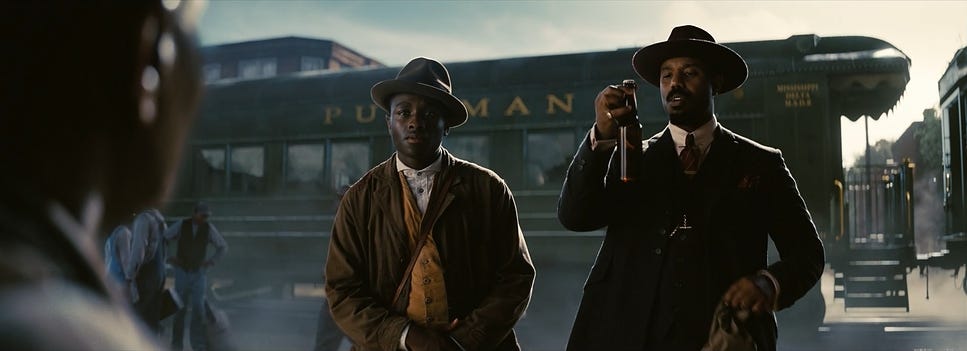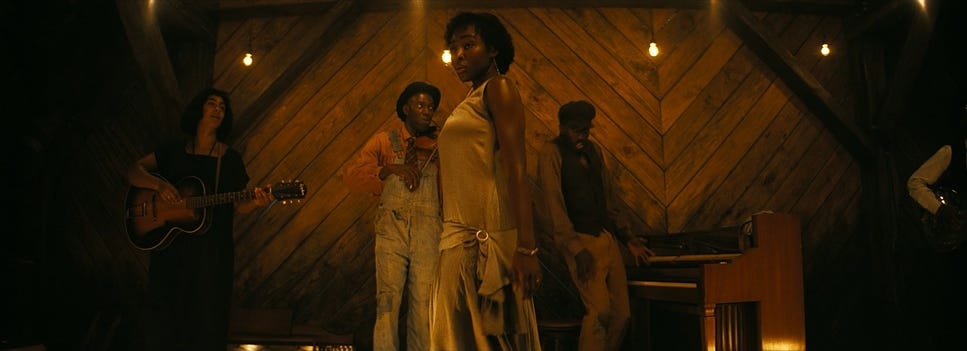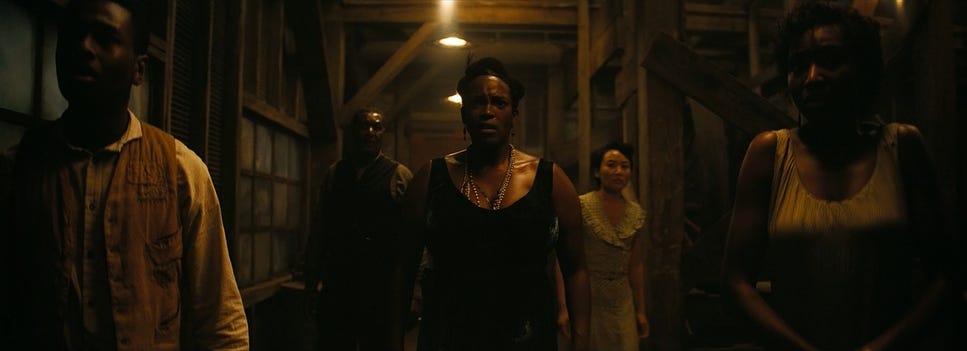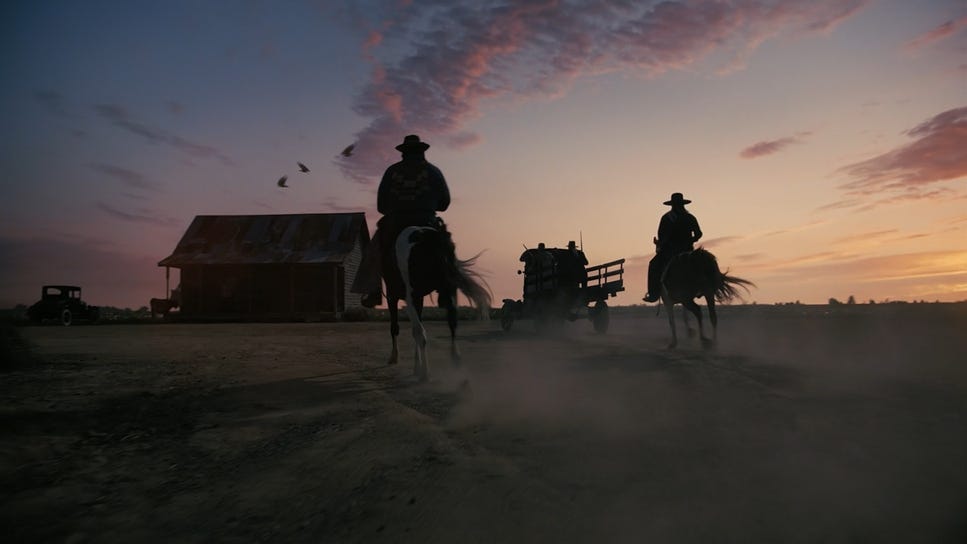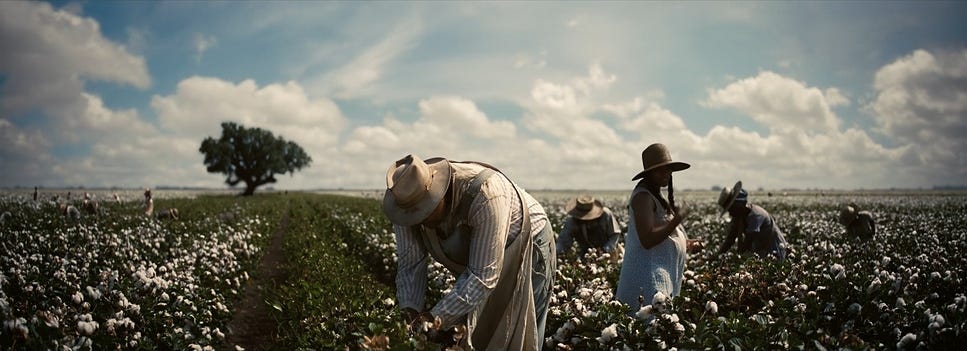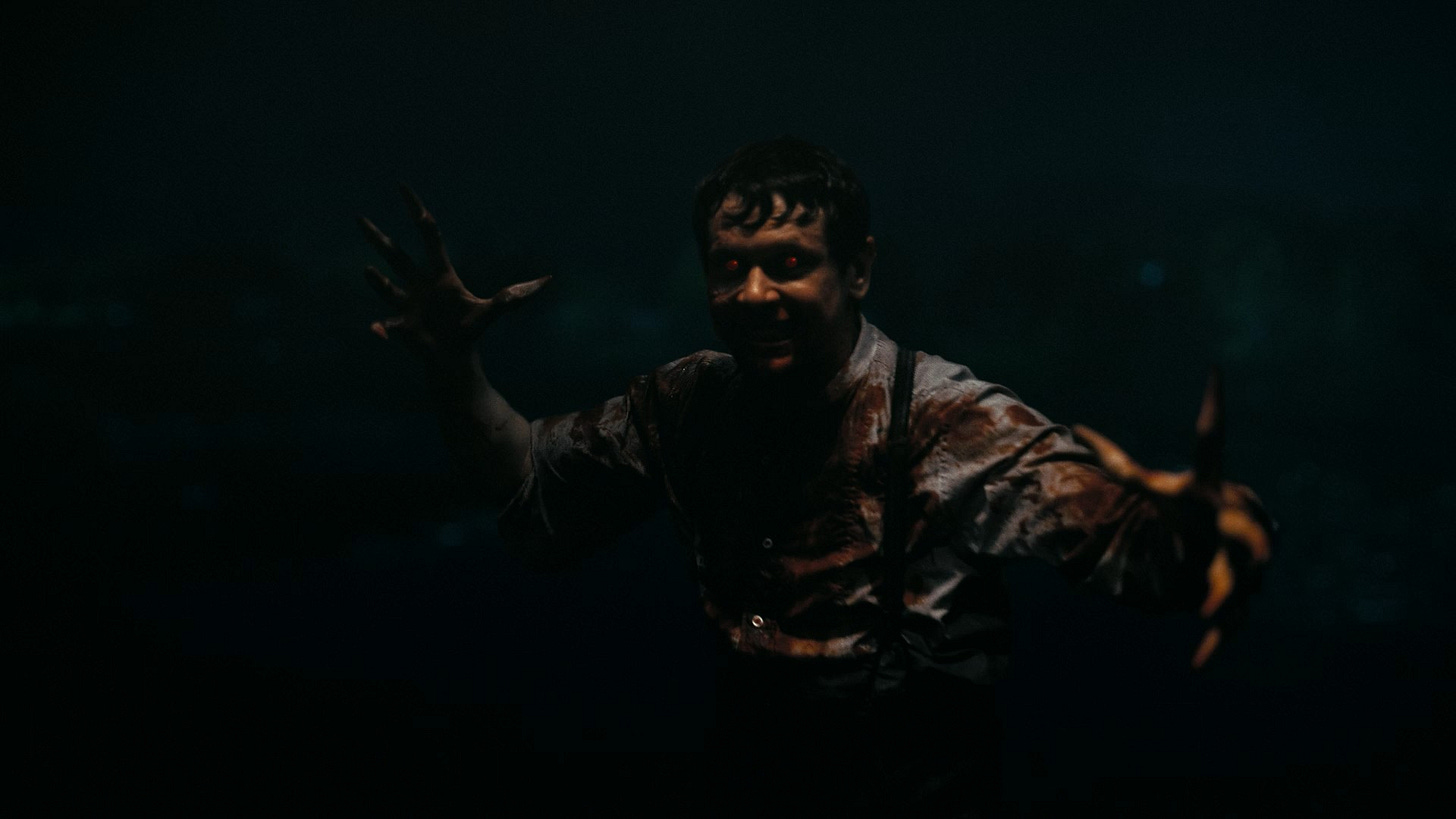In a cinematic era smothered by multiverse fatigue and IP mimicry, Sinners is a resurrection — a bold, blisteringly original vision that rewrites the rules of studio filmmaking.
Writer-director Ryan Coogler, already canonized for Fruitvale Station, Creed, and Black Panther, detours Southern Gothic mythology with a $100M film that feels like it was pulled from the dirt and bone marrow of the American South.
Let’s break it down.
Format as Faith
Forget digital sheen. Sinners was captured on 65mm Ultra Panavision (5-perf) and 15-perf IMAX — a groundbreaking feat that sets it apart from other films. The result? A film that doesn’t just show you a world.
It immerses you in it.
IMAX 1.43:1 is reserved for transcendent, spiritual ruptures: musical performances that feel like communions with the dead, or dreamlike visions where time folds in on itself. The Ultra Panavision 2.76:1, reminiscent of Ben-Hur and The Hateful Eight, captures the sweltering social and emotional landscapes of the Depression-era Delta with operatic sweep.
The Gospel According to Autumn Durald Arkapaw
Autumn Durald Arkapaw, Coogler’s DP and longtime Marvel collaborator, is the mastermind behind the film's unique visual palette. She bathes this world in golds, rusts, and charcoal blacks — a palette drawn from tobacco leaves, sweat, and dirt roads. Each frame is lived in. Haunted. A blues lyric painted with film grain.
Kodak’s Ektachrome 100D, custom-formulated in 65mm, was used for select sequences of spiritual rupture, shimmering with ethereal whites and cyan shadows. The rest of the film lives on Vision3 500T 5219, capturing that sticky Delta heat and the moral ambiguity of Coogler’s world.
You feel the texture. The humidity. The rot and beauty of a land stained with history.
Jordan’s Double Duty, and a Star Is Born
Let’s start with the miracle: Michael B. Jordan in dual roles as Smoke and Stack, twin WWI veterans trying to make a new life in the South. Jordan disappears into both — one resigned, the other restless. This is his Daniel Day-Lewis moment. Oscar-worthy.
In his debut as Sammie, Miles Caton carries the film’s soul. A sharecropper with the gift of music, Sammie becomes a reluctant medium between the living and the dead. His final performance scene — opposite blues legend Buddy Guy playing his older self — is cinematic transcendence.
Hailee Steinfeld as Mary, the tragic ex-lover-turned-vampire, walks the tightrope between seduction and sorrow. Her original song “Dangerous” (written and performed by Steinfeld) is a spectral torch ballad that lingers long after the credits.
And then there’s Jack O’Connell, chewing scenery and souls as the Irish-immigrant vampire Remmick — one part Dracula, one part colonizer, all menace.
Cut Like a Hymnal
Michael P. Shawver, Coogler’s editor, cuts Sinners like a sermon. Not fast. Not flashy. But rhythmic, refrained, even meditative, drawing the audience into the characters' emotional journeys.
Scenes repeat motifs, music becomes memory, and cuts echo across time. The film’s nonlinear structure — anchored in Sammie’s perspective — weaves past, present, and future like a spiritual blues track. It’s less about plot propulsion and more about emotional accumulation, making it a truly unique storytelling experience.
Early cuts of the script ended in total despair. But the final version — rewritten deep into pre-production — finds a note of bitter transcendence. Coogler doesn’t offer closure. He offers reckoning.
The Score That Bleeds
Composer Ludwig Göransson and his wife Serena didn’t just score Sinners — they channeled it. Built on field recordings, juke joint jams, and raw Delta blues, the music is as central to this film as its camera, creating a sonic landscape that envelops the audience.
Göransson used a 1932 Dobro Cyclops resonator guitar — the same one Sammie carries on screen. Real musicians were cast, authentic blues clubs were used, and nearly every performance was recorded live on set.
The film’s sonic influences range from Robert Johnson to Cedric Burnside. Rod Wave’s lead single “Sinners” burned through Spotify before the film hit theaters. This is the best marriage of music and story since Inside Llewyn Davis — but with higher stakes.
Faulkner, Dreyer, Welty
Despite working at a blockbuster scale, Coogler draws from the canon of high-art cinema: the spiritual paralysis of Faulkner, the haunting stillness of Carl Theodor Dreyer, and the weathered realism of Eudora Welty’s photography, which directly inspired the blocking, lighting, and composition.
Southern Gothic meets Soviet soul cinema.
Imagine if The Tree of Life had fangs.
A Film Built for the Ages, Not the Algorithm
Released in a post-COVID, pre-AI cultural moment, Sinners stands against the erosion of cinema’s soul. Its critical and commercial success ($365M worldwide) proves audiences still crave auteur-driven, high-stakes original filmmaking.
Already, it’s inspiring a wave of interest in 65 mm, Southern-set horror scripts and renewed curiosity in America’s musical and racial roots. And like all great films, it’s dividing critics. Some say it's too slow and too opaque.
But that’s the point.
This isn’t a film for quick takes.
It’s built for revisiting, for watching in the dark, with sound turned up and your phone turned off.





